
POPULAR SCIENCE. This year’s Soapbox Science event during the International Science Festival Gothenburg can only be described as a splendid success. An estimated total of 300 people or so stopped to watch and listen during the sessions in Nordstan, where brief presentations were being given by women researchers at Chalmers University of Technology and the University of Gothenburg.
Soapbox Science is a British notion, inspired by Speakers’ Corner in London. The event, held to coincide with the International Science Festival Gothenburg, consists of female and nonbinary researchers giving scientific minilectures that the nonspecialists can understand, using simple visual aids. The scientists concerned address all passers-by in Nordstan who stop at the speakers’ “soapboxes”. Topics raised span a wide range, from rampaging infections to rising sea levels and climate change to complex (slow) carbohydrates.
Three committed participants this time were Kerryn Elliott, Angelica Ljungberg, and Blair Matarlo. They all stress the fun they had during the event, and are keen to share their experience, so that more people are inspired to take the plunge and join in next year.
DNA is visible with the naked eye
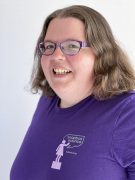
Kerryn Elliott, whose day job is conducting research in Erik Larsson Lekholm’s group, also took part last year in what was the first-ever occasion for Soapbox Science in Gothenburg. This time, she opted to make her presentation in Swedish, which was a little outside her usual comfort zone. Inspired by other presenters, she also chose to stand on the box when she was telling her audience about genetic material and showing them the DNA in strawberries.
“I had a DNA model with me — and a microscope, but I didn’t need to use that, since in fact you can see strawberry DNA with the naked eye. When you crush strawberries in soap and methylated spirit, DNA floats up in the liquid. Strawberries contain masses of DNA,” Kerryn (whose short talk was entitled “Would you eat DNA”?) relates.
Capturing people’s interest is easy

Angelica Ljungberg, an assistant researcher in Jan Holmgren’s group, provided help at the event. Her tasks were to attract an audience to the presenters’ boxes and to assist with various props during the talks. As part of the event, on one of the stage platforms in Nordstan where Angelica also featured as a speaker, a panel discussion was held on what Soapbox Science is all about.
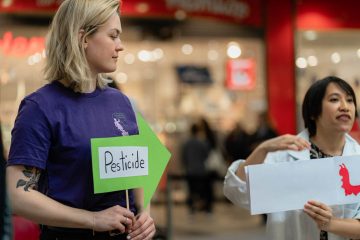
“I saw it as a nice challenge and, when I listened to a few of the presenters, I also got to learn a bit about subjects I wasn’t that familiar with. I’m glad I chose to take part, and next year I might join in as a presenter,” she says.
Angelica thinks it was easy to arouse people’s interest in the presentations. About three hundred people altogether came to listen to the various minilectures. Their age range was very wide, from small kids to young adults and seniors.
Useful practice
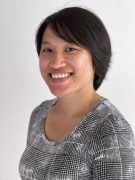
Just embarked on her doctoral studies at the Department of Biological and Environmental Sciences (BioENV), Blair Matarlo nonetheless already has extensive experience of public speaking, from her previous job as a high school teacher in Japan. Her research concerns biological evolution, and she spoke about the process whereby resistance to pesticides emerges in agriculture.
“For me, Soapbox Science was a good opportunity to polish my ‘elevator pitch’ and get practice in adapting my message to different target groups. In due course, I hope to get the chance to influence farming, by talking to producers of various agricultural materials,” Blair says.
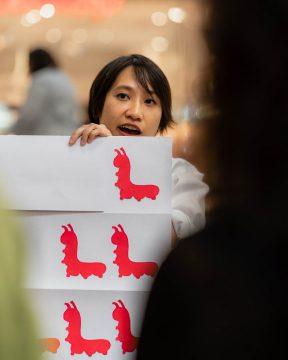
She made use of small dolls and insects made of paper, and illustrated the selection process that culminates in the emergence of pesticide resistance with brightly colored arrows.
Female and nonbinary
This year’s Soapbox Science attracted 12 presenters and 20 assistants. Anyone is welcome to take part as an assistant, but the role of presenter is reserved for female and nonbinary researchers.
“At scientific conferences, it happens all too often that various panels have an all-male composition — so often that we sometimes call them ‘manels’. But there are lots of women, of course, engaged in tremendously good science, and Soapbox Science is a fine opportunity to encourage and give prominence to female researchers as such,” Kerryn Elliott says.

This was the second time the Soapbox Science event had taken place in Gothenburg along in conjunction with the International Science Festival. Soapbox Science is financed by the Gender Initiative for Excellence (Genie) at Chalmers University of Technology. The initiators of Soapbox Science in Gothenburg 2022 were Anetta S Härtlova and Astrid von Mentzer, who took over as organizer of the 2023 event, with support from Sukanya Raghavan and Kerryn Elliott. Nicole Kerekes, a medical student, also contributed to the planning of this year’s arrangements.
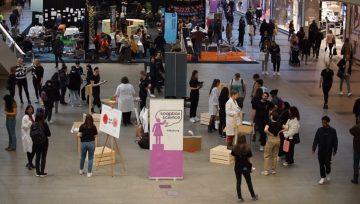
Next year the 2024 event will be again held at Nordstan during the Science Festival in Spring 2024. If you are interested in joining the team for next year or would like more information, contact Soapbox Science on social media by searching for “soapboxscienceGBG” on Twitter or Instagram!
BY: ELIN LINDSTRÖM










